The Best Radar Detectors

While we do not condone speeding, we acknowledge the fact that drivers do exceed the speed limit from time to time. Whether it’s in a rural part of the U.S. with a long and uneventful freeway, or the road has just opened up after being stuck in traffic, drivers like to stretch their car’s legs every now and then. That’s where a radar detector comes in handy, so long as they’re legal in your state (they’re currently illegal in Virginia and Washington, D.C., and only legal in Saskatchewan, Alberta and British Columbia in Canada). They’re also illegal throughout the US on any vehicle weighing over 10,000 pounds.
Radar detectors are designed to warn you of police presence and the use of speed detection hardware. They’re an in-car device that mounts inside your vehicle, similar to a dash cam or handheld GPS device.
When shopping for a radar detector, you’ll likely notice they come in a wide range of prices. These devices make a strong case for “you get what you pay for,” as cheaper models tend to be less accurate and return more frequent false positives. Some models can approach four figures, and some serious cross country drivers will mount multiple radar detectors to cover all their bases.
In this article, we’ll take a look at our picks of the best radar detectors currently available, explaining their features and hopefully finding one that fits your budget. There are not that many manufacturers of good radar detectors (and Escort, Cobra, Beltronics and Snooper are all made by Cedar Electronics), but we’re including at least one from each of the seven or so reputable makers, and leaving off some brands that are too new to have much of a track record.
For more information on the best radar detectors, refer to our table of contents.
Table of contents
- 1. Editor's Pick: Cobra XRS9370 Radar/Laser Detector
- 2. Best Price to Features Option: Uniden R3 Extreme Long Range Radar/Laser Detector
- 3. Escort Passport S55 Radar Detector
- 4. Radenso XP Radar Detector
- 5. Valentine One V1 Gen 2
- 6. Escort Passport 9500ix Radar Detector
- 7. Cobra RAD 450 Laser Radar Detector
- Everything You Need to Know About Radar Detectors
- What is a Radar Detector?
- What are X-, K-, and Ka-Bands?
- What Exactly is Radar?
- What About Laser?
- What About Radar Detector Detection?
- Types of Radar Detectors
- Features to Consider
- Recent Updates:
- Q & A
1. Editor's Pick: Cobra XRS9370 Radar/Laser Detector
One of the more affordable radar/laser combination detectors available, the Cobra XRS9370 offers good performance for the price. It features "superfast sweep circuitry" to provide extra detection range and advanced warning to even the fastest radar guns. The detector also has VG-2 and Spectre alert while Pop mode detects the latest Radar Gun POP. Users can select between city and highway modes to reduce the frequency of false warnings in densely populated urban areas.
The compact unit detects all 14 radar/laser bands including LaserEye 360 degree detection, KU band detection, and has an UltraBright display for easy recognition of the band detected.
Pros | Price, LaserEye 360, KU, VG-2, Spectre, city/highway modes, compact |
Cons | Users report frequent false warnings |
2. Best Price to Features Option: Uniden R3 Extreme Long Range Radar/Laser Detector
Despite its relatively affordable price—it's one of the less expensive radar detector on our list—it's one of the top-sellers in the category. The Uniden R3 is an advanced radar detector with 360-degree Eagle Eye detection for laser, X-band, K-band, Ka wideband, and POP mode radar gun. It has three city/highway modes and filters for K- and Ka-bands to prevent false detections.
Voice notifications allows drivers to stay focused on the road while a GPS feature allows the user to get red light camera alerts, mute memory false alerts, or mark location. A color OLED display makes the unit easy-to-see. This detector also has a mini-USB port so you can connect it to a PC for free GPS data updates.
Each package includes the detector, single and double suction cup brackets, cigarette adapter with mute key and USB port, connector double-sided Velcro tape, and carry case.
Pros | Best overall protection, 360-degree Eagle Eye detection, OLED display, voice notification, free GPS data updates |
Cons | Takes a while to learn to ignore false signals |
3. Escort Passport S55 Radar Detector
This is the latest addition to the Passport lineup of radar detectors from Escort. Touted as one of the most advanced, high performance radar and laser detectors on the market, the Passport S55 offers long-range warning on all radar and laser bands, long-range K- and Ka-bands, including instant-on POP mode. One exclusive feature on this device is AutoSensitivity, which intelligently filters out false alarms. You can also choose between Highway, Auto, and Auto No X settings.
Compatible with ESCORT Live, this radar detector provides access to an exclusive, real-time ticket-protection network that warns you of upcoming alerts received and reported by other users in the area. It also gives you access to local speed limit data for over-speed alerts. Customization settings include power on indication, meter type, auto mute, brightness level, audio tones, and selectable radar.
Pros | Latest-generation technology, long-range warning on all radar and laser bands, K- and Ka-bands, instant-on POP mode, AutoSensitivity, ESCORT Live |
Cons | Frequent false warnings |
4. Radenso XP Radar Detector
Even by just looking at our list of recommendations, you can probably tell that there are just a few brands that dominate the radar detector market. Radenso may not be as well known as brands such as Cobra and Whistler, as the company was founded in 2012, but the Radenso XP is great option with plenty of features. Designed to alert up to several miles away, the Radenso XP is designed to deal with today's modern technologies on the road, filtering out false alerts from systems like blind spot monitors, radar cruise control, and traffic sensors.
It covers several bands including Ka, K, and POP, displaying all the necessary information through an OLED display. It also uses GPS Lockout to remember common false alerts along regular routes, further removing false alerts. This unit also supports voice alerts with 260 different messages, selectable radar bands, the ability to display up to 3 signals, and has a built-in red light and speed camera database with lifetime free updates.
Pros | Filters out false alerts from modern driving assistance systems, GPS Lockout, OLED display, lifetime free updates on red light and speed camera database |
Cons | Doesn't alert from really far away like other units, provided suction cups aren't great |
5. Valentine One V1 Gen 2
The V1 is the granddaddy of high-end radar detectors. For years, while there were many other brands, the V1 consistently performed so much better than any other that it was basically just the Valentine; and everything else. But times moved on and for years the V1 didn't. It remained a great radar detector, but wasn't updated with the features that you came to expect.
In 2020, Valentine finally updated the V1 with the Valentine One V1 Gen 2. It builds on the success of the original by packing upgraded hardware into the same magnesium case and display that sets the standard for readability.
The Valentine One V1 Gen 2's claims to fame are detecting weaker signals at longer range than other detectors, as well as trapping local oscillator output, meaning radar detector detectors are less likely to pick it up—important if you forget to take it down in a state or province that outlaws them. New K-band filters reduce false positives from driver assist aids like distance control, and environmental false positives like supermarket doors. A new app and Bluetooth provides advanced programming, updates and learning features.
Pros | Front panel programming, excellent customer service, easy to read display |
Cons | Very expensive, large |
6. Escort Passport 9500ix Radar Detector
The Escort Passport 9500ix is more expensive than most radar detectors, but it's also one of the highest-rated and most popular on Amazon. The unit delivers long-range warning on all radar bands including X, K, Superwide Ka, and instant-on POP modes. It features multiple front and rear laser sensors, providing 360-degree protection. Helping prevent against false alarms from automatic door openers, motion sensors, and other radar-based sensors is the Passport 9500ix's GPS-powered intelligence. The detector also comes pre-loaded with thousands of red light and fixed position speed camera locations throughout North America.
This detector is also compatible with ESCORT Live, an award-winning app that warns of upcoming alerts received and reported by other users in the area. The app also gives access to local speed limit data for over-speed alerts.
Programmable features on the Escort Passport 9500ix include power-on indication, SpeedAlert, AutoLearn, Signal Strength Meter, AutoMute, AutoPower, Units, Voice, Dark Mode, Radar/Laser Bands, Markers, and five levels of brightness control.
Pros | 360-degree protection against all radar bands, GPS-powered intelligence, compatible with Escort Live |
Cons | Price |
7. Cobra RAD 450 Laser Radar Detector
Back to more affordable options, the Cobra RAD 450 is the final detector on our list. It uses Cobra's patented IVT Filter TM system, which reduces false alerts from sources like collision avoidance systems. It's a long-range detector with a range of at least two miles on flat, open conditions. The Cobra RAD 450 can detect from both front and rear with its advanced laser eye sensor and seeks out X, K, and Ka bands with signal strength indicator, laser, and VG-2 signals.
There is also digital voice announcements that provide band identification and easy to understand alerts, allowing the driver to keep their eyes on the road. On the front of the detector is an OLED display that's easy to read.
Pros | IVT Filter TM system, long-range detector, voice announcements, OLED display |
Cons | Only front and rear detection, no advanced features |
Everything You Need to Know About Radar Detectors
We get it. Every now and then you just need to travel above the speed limit, whether it's an open road or you're trying to get through traffic. AutoGuide.com does not condone speeding, but we're also realistic that not everyone stays below the speed limit at all times. That's where a radar detector can come in handy, potentially saving you from an expensive ticket if they're legal in your state. When it comes to U.S. states, currently only Virginia and Washington, D.C. have made radar detectors illegal. We recommend to check with your local state laws before purchasing a radar detector, since regulations may change.
Shopping for a radar detector is no easy task, especially if you don't have a lot of experience with the technology. There are likely words and bands you don't recognize in various product descriptions, so we're here to help make things as clear as possible.
What is a Radar Detector?
In the most basic sense, a radar detector will warn you of possible upcoming police or other law enforcement who are monitoring speed. Good radar detectors are able to detect a wide variety of bands at long range, giving you ample time to slow down before getting a ticket. Essentially, a radar detector hones in on the band signal coming from a speed gun, alerting you through a visual or auditory signal.
What are X-, K-, and Ka-Bands?
In the U.S., police radar guns operate on three frequency bands: X, K, and Ka. The oldest of the three bands is the X-band, which is being phased out with newer and smaller DSP Ka-band radar guns. The K-band is still common, while the Ka-band offers wider coverage for law enforcement to detect speeders.
There is also POP radar, which was designed to transmit a single radar transmission that's extremely short to render radar detectors obsolete. Since then, however, radar detector manufacturers have developed technology to detect POP radars.
Along with three radar bands and POP radar, law enforcement in the U.S. also use one laser band.
What Exactly is Radar?
According to Escort, a reputable manufacturer of radar detectors, there are over 100,000 radar guns being used in the U.S. On a daily basis, across multiple shifts in multiple vehicles, there are potentially 100 million radar traps in the U.S. every year. To explain how radar works, the company uses a simple analogy:
"Think of a guard performing his security check at night. From hundreds and hundreds of yards away we are able to see his progress as he searches back and forth in the dark - yet, the guard can't see us," Escort explains. "In fact, the guard can turn the flashlight directly at us and still never see us! Why? Because in order for us to become visible to the guard, there must be sufficient light reflected off our our clothing and returned to his eyes before he can see us. Notice - we can always see the flashlight even though the guard can't see us. That's because we only need a small amount of light from the flashlight to see it in the dark." In a way, that's how a radar detector works, giving the driver an advantage when using one.
A high-quality radar detector is designed to detect the energy from a radar gun, even though the radar gun won't be able to see the driver until they're getting closer.
What About Laser?
Laser guns aren't as popular as radar guns, with Escort estimating 35,000 in use today. Unlike radar guns, law enforcement using a laser gun must do it from a stationary position, which means you'll likely see them being used near highway overpasses and from interstate medians. They are also affected by certain weather conditions such as rain and fog, and in most cases, cannot be used through glass.
Laser guns use a very narrow beam of light to target vehicles, with the beam being fired at a vehicle at the speed of light. Once the light hits the target, the light reflects off and back to the laser gun. The laser gun uses the reflected light pulses to calculate a vehicle's speed, based on the amount of time it takes for the light pulses to come back to the gun.
A good laser detector will be able to see the laser source and the reflected light signals that bounce off other objects. Typically when a group of cars is being targeted, you can expect your laser detector to alert you.
What About Radar Detector Detection?
In the U.S., radar detectors are legal to use in non-commercial vehicles so long as you aren't traveling in Virginia or Washington, D.C. Since they are illegal in Virginia and the nation's capital, as well as in commercial vehicles, some areas use radar detector detectors, also known as RDDs.
There are two common types of RDD technologies: VG-2 and Spectre. VG-2 works by detecting the oscillations on a single frequency band, while Spectre is a more sophisticated technology that operates on several frequency bands and can pick up more emissions from a radar detector.
More expensive radar detectors will offer shielding and protection against VG-2 and Spectre. If RDDs are a concern to you, make sure you grab a radar detector that prevents VG-2 and Spectre.
Types of Radar Detectors
Before you start researching individual products, you should determine the type of radar detector you want. Most radar detectors are corded units, which means they must be plugged into a cigarette lighter for power. These are typically the best performing detectors and are the most reliable, so long as you can deal with the sight of a cord dangling from your windshield.
If you travel a lot or often have to switch cars for whatever reason, you may want to consider a cordless detector. These are powered by batteries, which means you can take them on the go. Just make sure you keep a spare set of the batteries it needs, just in case it runs out of power.
The third and least common type of radar detector is a remote-mount detector. These are permanently mounted to your vehicle, allowing for a clean installation that could be out of sight from potential thieves.
Features to Consider
Along with researching the bands a device can detect, make sure to take a look at any more advanced features a particular radar detector has to offer. These features range from built-in GPS technology, smartphone compatibility, auto mute, safety alerts, and multiple city/highway modes.
Radar detectors with built-in GPS technology have a few benefits. Some can adjust their sensitivity based on how fast the vehicle is traveling, reducing the need for switching between city and highway modes. Another benefit is that some radar detectors will remember certain areas that you drive through frequently, alerting you when you're approaching something of interest. Some units provide warnings for upcoming speed drops and red light cameras.
Detectors that have smartphone compatibility normally take advantage of an app that works alongside your radar detector. Escort Live for example, warns of upcoming alerts received and reported by other users in the area, in addition to giving access to local speed limit data for over-speed alerts.
Regardless of how expensive or advanced a radar detector is, there's always a chance it will report a false negative. Devices equipped with an auto mute function will automatically decrease the volume of a warning so that it doesn't become annoying. This is a feature you may want to look for if you often drive in city or urban areas, where false positives are most common.
Some radar detectors feature a safety warning system, which keeps the driver informed of possible situations that require attention, such as emergency vehicles, road hazards, and road construction delays or detours.
Lastly, multiple city/highway modes help to filter K- and Ka-bands to prevent false detections. Most modern radar detectors come with city/highway modes.
Recent Updates:
November 30, 2021: Removed Whistler products from recommendations due to persistent stock issues.
November 24, 2021: Removed discontinued Escort Passport 8500 X50.
September 22, 2021: Expanded FAQ and Q&A. Removed unavailable Whistler CR70, replaced with Whistler CR88. Removed unavailable Beltronics, added Valentine One.
August 31, 2021: Added a promoted product recommendation.
June 16, 2021: Edited some text for clarification and added some FAQs to the article.
April 9, 2021: Replaced the Whistler CR65 with the Whistler CR70 due to availability.
March 22, 2021: Removed the Whistler XTR-130 Laser Radar Detector due to availability. Added the Radenso XP Radar Detector to our list of recommendations.
We are committed to finding, researching, and recommending the best products. We earn commissions from purchases you make using the retail links in our product reviews. Learn more about how this works.
Photo Credit: Gary Blakeley / Shutterstock.com
Q & A
Can I use a radar jammer?
Absolutely not. It is a felony to use one throughout North America. They also don't work, at all, as they can't put out enough power to affect a radar gun.
Where should I mount my radar detector?
Where you mount a radar detector plays a role in how effective it is in detecting signals. We recommend to mount it as high as possible without obstructing its view, and generally in the center of the vehicle. Near the rearview mirror is the most common installation spot for drivers.
Is a radar detector worth the money?
This largely depends on how often you drive and at what speeds. If you're frequently putting yourself at risk of getting a speeding ticket, a radar detector could pay itself off just by properly alerting you once.
Should I use a radar or a laser detector?
While laser detectors are cheaper, there are thousands more radar guns in use. If you're choosing, choose a radar detector.

Jason Siu began his career in automotive journalism in 2003 with Modified Magazine, a property previously held by VerticalScope. As the West Coast Editor, he played a pivotal role while also extending his expertise to Modified Luxury & Exotics and Modified Mustangs. Beyond his editorial work, Jason authored two notable Cartech books. His tenure at AutoGuide.com saw him immersed in the daily news cycle, yet his passion for hands-on evaluation led him to focus on testing and product reviews, offering well-rounded recommendations to AutoGuide readers. Currently, as the Content Director for VerticalScope, Jason spearheads the content strategy for an array of online publications, a role that has him at the helm of ensuring quality and consistency across the board.
More by Jason Siu











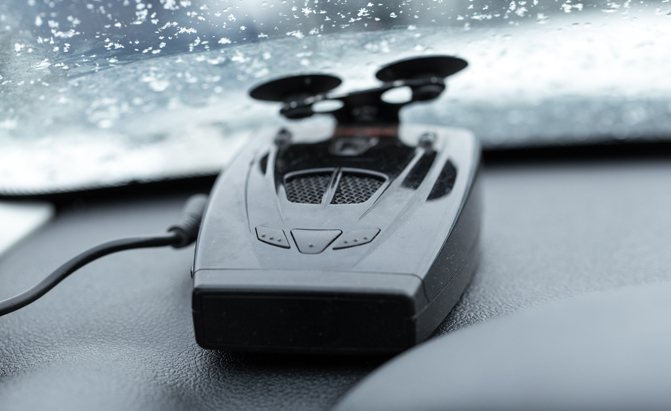














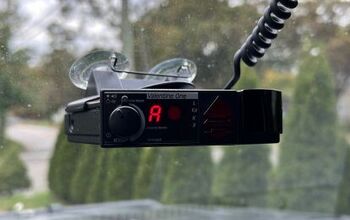


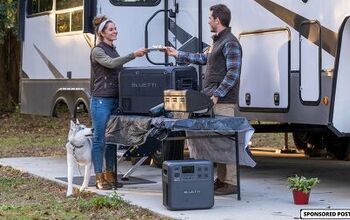
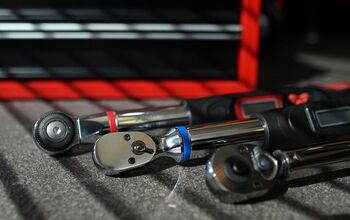





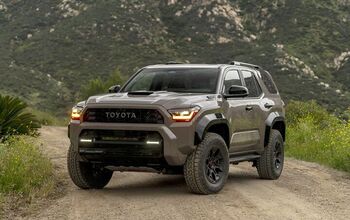




Comments
Join the conversation